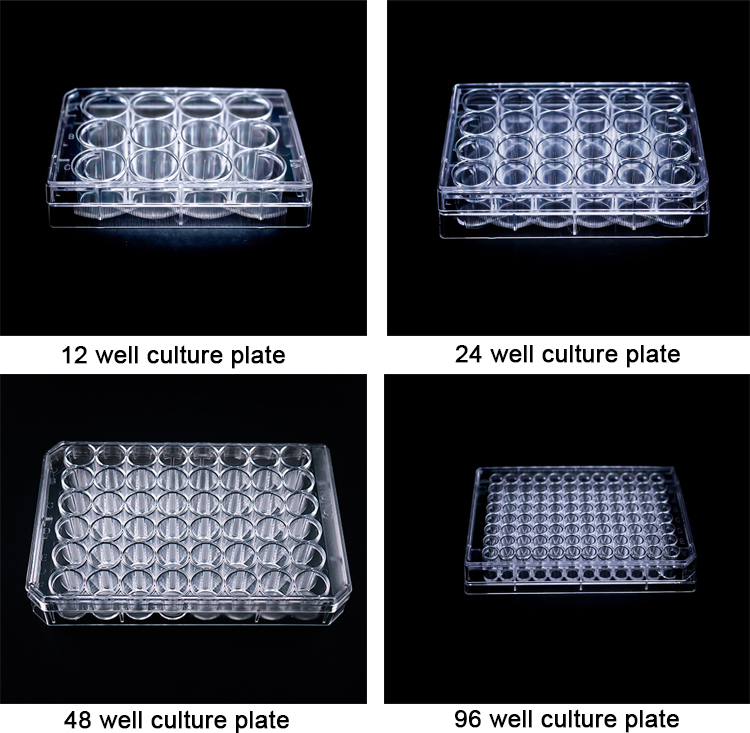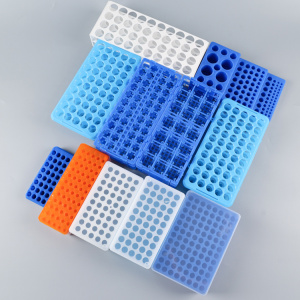Sealing and Contamination Issues in Multiwell Cell Culture Plates
The multi-well cell culture plate also follows the principle of strict asepsis when performing cell operations, and all operations must be standardized and scientific, without causing additional impact on cell growth. The most common problem is how to ensure the uniformity of the cells after adding the sample and minimize the impact of changing the medium on the growth state of the cells.
Loading and handling of multi-well cell culture plates:
The cell culture plate also follows the principle of strict asepsis when performing cell operations. All operations must be standardized and scientific, and will not cause additional impact on cell growth. The most common problem is how to ensure the uniformity of the cells after adding the sample and minimize the impact of changing the medium on the growth state of the cells.
ask:
The lids of 96 and 24-well culture plates or petri dishes are very loose, which is convenient for ventilation, but will bacteria, mold and other pollutants also slip in?
answer:
The lid is very loose, which belongs to semi-open culture, and the purpose of this is to ventilate (in fact, it is to make the CO2 outside the culture dish fully exchange with the culture dish and maintain the pH value of the culture medium).
Everything has advantages and disadvantages, which of course increases the possibility of pollution. In addition, this causes the liquid in the dish to evaporate, which is notable for precise dosing of drugs. Therefore, the following two measures are necessary: a. The air in the incubator must be clean (regular ultraviolet light, alcohol scrubbing, and the incubator should be opened and closed as little as possible) b. The humidity in the incubator must always be kept at 100% (the sink with sterile distilled water placed in the incubator ).
Just like a petri dish, it is also a container with an upside-down lid, and it will not be polluted. Mainly because of the negative pressure of the airflow generated by the "L" edge of the cover, there are microorganisms attached to the dust, and the dust carried by the airflow cannot pass through the edge of the cover that generates negative pressure. The ventilation effect is only through the diffusion of air, and no airflow will be generated, so it will only breathe and not penetrate bacteria.
ask:
Using a 24-well plate, there are operations in some of the wells (in the ultra-clean bench), and there are cells to be cultured in other wells. I am worried that this will cause contamination. I don`t know what to pay attention to?
answer:
If the operation is standardized in the ultra-clean bench, it should be ok. I think you can make full use of the cover of the culture plate, try to expose only the holes to be operated, and cover the other holes with covers.
Consider comprehensively before use and make full use of all the holes; if you only need to use a few holes, you can use only one side, and cover the rest with a cover. I am used to using the right hole first (it is convenient to add samples to the right hand).

When operating, use a few glass slides to raise one side of the board, do not open the cover completely, generally no problem.
Uneven cell distribution and solutions
ask:
Cells are inoculated on the culture plate, and the cells always gather in the peripheral part, how to deal with it?
answer:
May I ask how your cells are mixed? Is it pipetting or shaking the culture plate? If it is the latter, and if it is shaken in a circle, it is very likely that the cells will be thrown to the peripheral part due to the centrifugal force, resulting in fewer cells in the middle. More than four weeks!
Here is a good way: before cultivating the seed plate, put the culture plate into the incubator for a few hours of saturation and then take it out. The force should be light when planting the cells. Adding slowly allows the cell suspension to flow into the wells of the plate, and the cultured cells basically grow evenly. Remember to never shake with a shaker, or your cells will clump together like you said.
The smaller the hole diameter of the culture plate, the more obvious this phenomenon is. This phenomenon is unavoidable for 24 and 96-well plates, because the liquid adheres to the wall so that the culture solution in the well does not form a liquid level, but the periphery is high, just like a concave mirror. However, when using these two kinds of orifice plates, it is not possible to add sufficient amount of culture solution due to the need for additional intervention, so that the cells will appear "edge collection" together with the culture solution. It depends on what indicators you need to observe. If it is MTT, immunohistochemistry will affect the results due to cell layering.
When digesting cells, pay attention to pipetting evenly to avoid cell clumps, and the amount of culture solution in the well should be sufficient. Generally, add enough culture solution when inoculating, and change the solution once when adding intervention. The amount of culture solution added to the intervention solution is equal to the amount of culture solution at the time of inoculation , In this case, the phenomenon of "edge set" will be improved, so you might as well give it a try.
ask:
What I did was the plaque formation experiment. It is best to spread the cells in a uniform layer. Most of the holes are fine when the virus is inoculated, and some of them are not uniform. There are great differences in the cell group. I would like to ask you what method you use when adding cells?
answer:
It is critical to pipette the cells into a single-cell suspension after digestion! Make sure that the number of cells in each well is consistent when splitting the plate!
Of course, there are also processing factors. The parallelism between the wells is also very important. For example, when adding medicine, mix the medicine after dilution to ensure that the concentration of each well is consistent!
Furthermore, when adding cells and drugs, the test group and the control group should be added in turn to avoid the difference in cell density and drug concentration caused by the sequence of adding samples!
ask:
The blowing is already uniform, but the planking, 6 holes, and 24 holes are always somewhat uneven, and a little concentrated in the middle. Moreover, it is obvious that the counting is done, and after a day or two, the density of each hole is different, which will affect the detection. Is there a good way?
answer:
If you use a Pasteur pipette, do not suck too much each time, because the cells in the pipette will automatically sink, often the number of cells in the first few holes is large, and the cell suspension is often uniform, and the liquid will follow the S-shape route.
If you use a pipette, the tips should be processed and removed to avoid damaging the cells, so that each time the liquid is taken corresponds to a well. It is more accurate to add one-to-one hole with tip. But also pay attention to mixing the suspension.
To set up a parallel group, n must be large enough (you can calculate it).
Do not shake after plating, as shaking will cause cells to aggregate towards the center. It is best to plank once.
Porous cell culture plate Yongyue Medical has always regarded quality control as the life of the enterprise, and pursued the continuous improvement of enterprise competitiveness. The company always adheres to the enterprise spirit of obeying laws and regulations, being strict with self-discipline, being lenient, and daring to take responsibility as the standard in operation, maintaining and expanding the market with excellent quality and excellent service, and meeting the needs of customers to the greatest extent. . Win-win with customers is our development goal. Yongyue Medical! Your trusted partner. We are willing to cooperate sincerely with you to create a better future.



